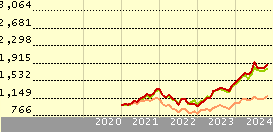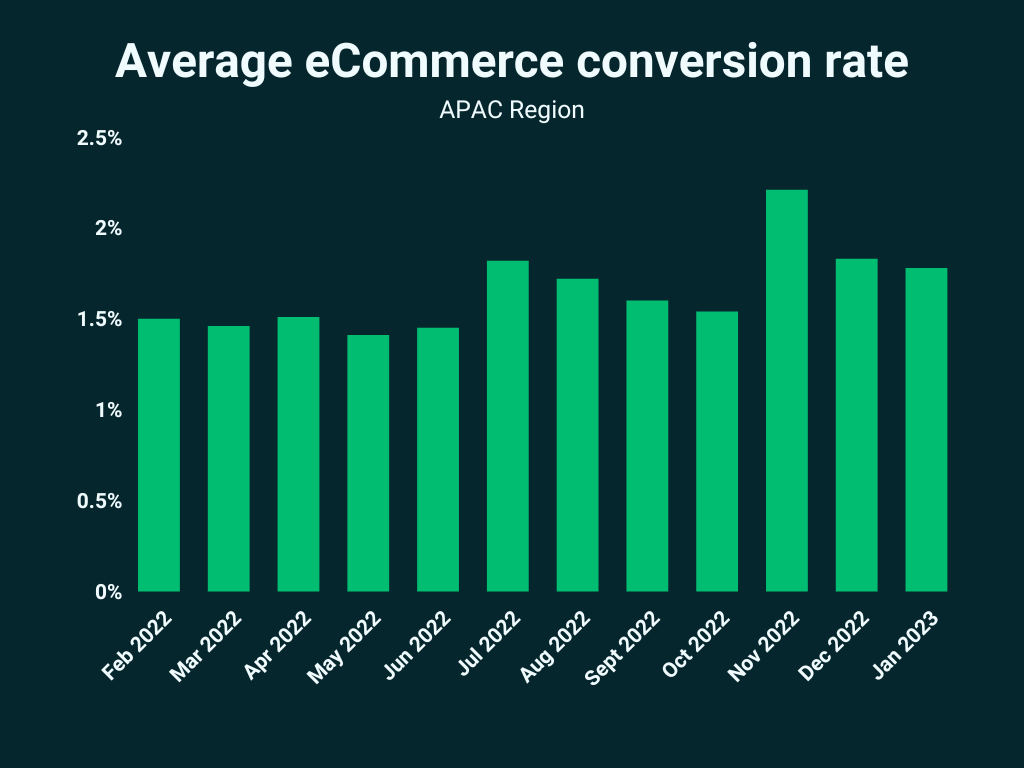In the world of finance, indices play a crucial role in helping investors understand the performance of various sectors, industries, and global markets. Among the most important sectors tracked by indices today is the technology sector, which has transformed the global economy and continues to drive innovations that shape our daily lives. One such index that focuses specifically on the technology sector is the L&G Global Technology Index.
This index, managed by L&G Global& General Investment Management (LGIM), aims to capture the performance of the largest and most influential technology companies from around the world. Whether you’re an investor, a tech enthusiast, or someone interested in understanding the forces shaping the global economy, this comprehensive guide will walk you through everything you need to know about the L&G Global Technology Index. We’ll cover its definition, the companies it tracks, the benefits and risks of investing in this index, and much more.
What Is the L&G Global Technology Index?
The L&G Global Technology Index is a financial benchmark that tracks the performance of companies in the global technology sector. Managed by Legal & General Investment Management (LGIM), one of the largest asset managers globally, the index aims to provide investors with a comprehensive overview of the performance of leading technology companies from different regions across the world.
The index covers companies from various sub-sectors of technology, including:
- Software (e.g., operating systems, enterprise software, SaaS)
- Hardware (e.g., semiconductors, devices)
- Internet Services (e.g., search engines, social media platforms, cloud computing)
- Digital Services (e.g., e-commerce, online payments)
- Innovative Technologies (e.g., AI, autonomous vehicles)
By tracking the performance of these companies, the index allows investors to gain exposure to the global technology landscape while maintaining diversified risk.
Index Composition
The L&G Global Technology Index is structured in such a way that it gives more weight to larger companies with greater market capitalization. This market-capitalization weighting means that the bigger the company (in terms of stock value), the more influence it has on the performance of the index. This feature ensures that the index reflects the true size and impact of the companies leading the tech sector.
Why Is the L&G Global Technology Index Important?
The L&G Global Technology Index is important for several reasons, and its value extends beyond individual investors seeking to build portfolios. The index plays a critical role in understanding trends, innovations, and risks within the global technology sector. Here are some reasons why this index is essential for investors and analysts:
1. Tracking the Future of Technology
The technology sector is evolving faster than almost any other industry. From breakthroughs in artificial intelligence to the rapid growth of cloud computing, emerging technologies are setting the stage for the next decade. The L&G Global Technology Index helps investors stay connected with these trends by offering exposure to the biggest names in the sector.
For example, companies like NVIDIA, a leader in graphics processing units (GPUs), are pioneers in AI and machine learning. Investors interested in these fields can look to the index to see how these companies are performing over time.
2. Diversification Across Multiple Sub-Sectors
Technology is not just one industry; it is a collection of sub-sectors that are constantly evolving. By investing in the L&G Global Technology Index, investors gain access to a diverse range of tech companies, from semiconductors and hardware to software and cloud services. This diversification reduces the risk associated with putting all your money into a single technology segment.
For example, if the semiconductor market experiences a downturn, companies in the cloud computing or software sub-sectors might still perform well, providing a cushion for investors.
3. Exposure to Global Markets
One of the main advantages of the L&G Global Technology Index is its global exposure. While many investors may think of tech companies as primarily based in Silicon Valley, some of the biggest tech firms in the world are located outside of the United States. Tencent (China), Samsung (South Korea), and SAP (Germany) are just a few examples of global tech giants included in the index. By tracking the performance of these companies, investors gain insight into the global tech landscape and its growth drivers.
A Deep Dive Into the Companies Tracked by the L&G Global Technology Index
The L&G Global Technology Index tracks a number of large-cap companies that are the key drivers of technological innovation. Below are some of the largest and most influential companies included in the index, which help shape the technology sector.
1. Apple Inc. (AAPL)
Apple is the world’s largest technology company by market cap and is an integral part of the L&G Global Technology Index. Known for its premium consumer electronics products such as the iPhone, iPad, and Mac computers, Apple also has a robust services division that includes Apple Music, iCloud, and the App Store. In addition, Apple is investing heavily in emerging technologies like augmented reality (AR), autonomous vehicles, and wearable devices.
Market Cap: $2.7 Trillion (approx.)
Sector: Consumer Electronics, Digital Services
Key Technologies:
- iOS and macOS
- Apple’s custom-designed chips (e.g., M1, M2)
- Wearable tech (Apple Watch)
- AI and machine learning for user experience enhancement
2. Microsoft Corporation (MSFT)
Microsoft is another heavyweight in the technology sector, and its role in the L&G Global Technology Index is undeniable. A leader in both software and cloud computing, Microsoft’s products such as Windows, Microsoft Office, and Azure are staples for businesses around the world. Its transition to cloud computing with Azure has significantly boosted the company’s growth.
Market Cap: $2.5 Trillion (approx.)
Sector: Software, Cloud Computing
Key Technologies:
- Azure cloud platform
- Artificial intelligence and machine learning capabilities
- Enterprise software (e.g., Office 365, Dynamics 365)
3. Alphabet Inc. (GOOGL)
Alphabet is the parent company of Google, the world’s leading search engine. However, Alphabet’s business extends far beyond just search. The company’s vast portfolio includes Google Cloud, YouTube, Android OS, and innovative projects such as Waymo (self-driving cars) and Verily (life sciences).
Market Cap: $1.8 Trillion (approx.)
Sector: Internet Services, Advertising
Key Technologies:
- Google Search Engine and Ads
- YouTube (video sharing and content creation)
- Google Cloud (cloud computing)
- Artificial intelligence (e.g., Google Assistant, Google Brain)
4. NVIDIA Corporation (NVDA)
NVIDIA is a leader in the semiconductor space, known for its graphics processing units (GPUs). Over the years, NVIDIA has become integral to the growth of industries such as gaming, artificial intelligence, and data centers. With the rise of AI and machine learning, NVIDIA’s GPUs have become a standard tool for companies and researchers developing cutting-edge technologies.
Market Cap: $1 Trillion (approx.)
Sector: Semiconductors
Key Technologies:
- GPUs for gaming, AI, and deep learning
- CUDA programming model for parallel computing
- Data center and cloud-based services
5. Amazon.com Inc. (AMZN)
Amazon has transformed the way people shop and interact with digital services. As the world’s largest e-commerce platform, Amazon has also revolutionized cloud computing through Amazon Web Services (AWS), the leader in public cloud services globally. Its reach extends into entertainment (via Amazon Prime Video), logistics, and even groceries with Amazon Fresh.
Market Cap: $1.4 Trillion (approx.)
Sector: E-commerce, Cloud Computing, Digital Services
Key Technologies:
- AWS (cloud infrastructure)
- Alexa (voice-powered AI assistant)
- Prime Video and streaming services
- Logistics and fulfillment technology
How to Invest in the L&G Global Technology Index
For investors interested in gaining exposure to the global technology sector, there are several ways to invest in the L&G Global Technology Index. Here are the main options:
1. Exchange-Traded Funds (ETFs)
The most popular way to invest in the L&G Global Technology Index is through ETFs. ETFs are investment funds that trade on stock exchanges just like individual stocks. There are various ETFs that track the performance of the L&G Global Technology Index, giving investors an easy and cost-effective way to gain exposure to the sector.
- Advantages:
- Diversification across a wide range of tech companies
- Lower costs than actively managed funds
- Ability to buy and sell shares during market hours
- Examples:
- L&G Global Technology ETF
- iShares Global Tech ETF
- Invesco QQQ Trust (tracks Nasdaq-100, which includes many of the tech companies)
2. Mutual Funds
Another option is to invest in mutual funds that track the L&G Global Technology Index. Mutual funds pool money from multiple investors to buy a portfolio of stocks, and they are usually actively managed. However, some funds track indices passively and can offer low fees, making them an efficient way to gain exposure to the tech sector.
- Advantages:
- Professional management
- Long-term capital appreciation potential
- Access to global diversification
3. Direct Stock Investment
For those who prefer a more hands-on approach, investing directly in the stocks of companies in the L&G Global Technology Index is also an option. This approach requires more time and research to track individual companies, but it allows investors to tailor their portfolio to their specific preferences.
- Example Stocks:
- Apple (AAPL)
- Microsoft (MSFT)
- NVIDIA (NVDA)
4. Robo-Advisors
Robo-advisors are automated investment platforms that manage your investments based on your risk tolerance, time horizon, and financial goals. Many robo-advisors offer portfolios that include ETFs tracking technology indices, making it easy for investors to gain exposure to the L&G Global Technology Index without actively managing their investments.
Risks Associated with the L&G Global Technology Index
Like any investment, there are inherent risks associated with investing in the L&G Global Technology Index. Some of the key risks include:
1. Market Volatility
The technology sector is known for its high volatility. While many tech companies have seen tremendous growth in recent years, market corrections, economic downturns, or regulatory changes can cause sharp declines in stock prices. It’s essential for investors to be prepared for short-term market fluctuations.
2. Sector Concentration Risk
Because the L&G Global Technology Index is heavily focused on the tech sector, it is exposed to sector-specific risks. For example, if there is a technological disruption, regulatory changes (such as stricter data privacy laws), or a slowdown in consumer demand for technology products, the performance of the index could be negatively impacted.
3. Innovation Risk
While the technology sector is characterized by innovation, not all innovations succeed in the marketplace. Companies that seem poised for success may fail to live up to expectations, either due to competition, changes in consumer preferences, or regulatory challenges.
Conclusion
The L&G Global Technology Index provides a powerful tool for investors looking to gain exposure to the technology sector. By tracking the performance of leading global tech companies, this index offers diversification, transparency, and an opportunity to capitalize on the growth of the technology industry. However, like all investments, there are risks involved, so it’s essential to approach investing in this index with a well-researched strategy.
Whether you’re an experienced investor or a newcomer to the world of technology investing, the L&G Global Technology Index can be a valuable addition to your portfolio. By leveraging this index, you can gain a deeper understanding of the tech industry, its potential for growth, and the risks associated with its continued evolution.
If you’re interested in exploring investment opportunities in this index, consider consulting with a financial advisor to help you navigate the various options available and make decisions aligned with your financial goals.for more posts also read this website














Leave a Reply